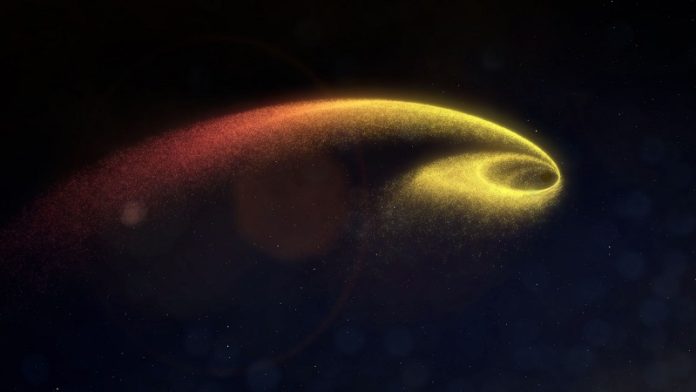
Buried in the treasure trove of the Gaia catalog were two strange black hole systems.
These were black holes orbiting sun-like stars, a situation that astronomers long thought impossible. Recently a team has proposed a mechanism for creating these kinds of oddballs.
The two black holes, dubbed BH1 and BH2, are each almost ten times the mass of the Sun.
That’s not too unusual as black holes go, but what makes these systems strange is that they each have a companion star with roughly the same properties as the Sun.
And those stars are orbiting on very wide orbits.
The problem with this setup is that typically sun-like stars don’t survive the transition of a companion turning into a black hole.
The end of a giant star’s life is generally violent. When they die, they tend to either eject their smaller companion from the system completely, or just outright swallow them. Either way, we don’t expect small stars to orbit black holes.
But now researchers have a potential solution. They tracked the evolution of extremely massive stars, no smaller than 80 times the mass of the Sun.
They found at the end of their lives they eject powerful winds that siphon off enormous amounts of material. This prevents the star from swelling so much that it just swallows its smaller companion. Eventually the star goes supernova and leaves behind a black hole.
Then the researchers studied just how common this kind of scenario is. They found many cases where a sun-like star with a wide enough orbit could survive this transition phase.
The key is that the strong winds coming from the larger star have to be powerful enough to limit its late stage violence while still weak enough to not affect the smaller star.
The researchers found that this was a surprisingly common scenario and could easily explain the existence of BH2 and BH2.
Based on these results the researchers believe that there might be hundreds of such systems in the Gaia data set that have yet to be discovered. It turns out that the universe is always surprising us and always much more clever than we could ever realize.
Written by Paul M. Sutter/Universe Today.



